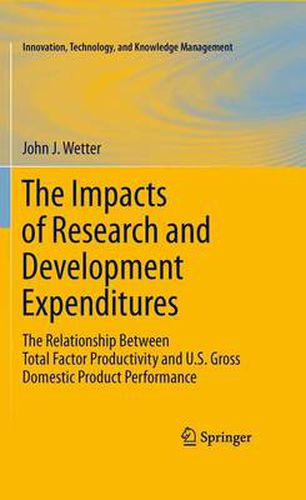Readings Newsletter
Become a Readings Member to make your shopping experience even easier.
Sign in or sign up for free!
You’re not far away from qualifying for FREE standard shipping within Australia
You’ve qualified for FREE standard shipping within Australia
The cart is loading…






This title is printed to order. This book may have been self-published. If so, we cannot guarantee the quality of the content. In the main most books will have gone through the editing process however some may not. We therefore suggest that you be aware of this before ordering this book. If in doubt check either the author or publisher’s details as we are unable to accept any returns unless they are faulty. Please contact us if you have any questions.
The research underlying this volume was designed to test the theory of Total Factor Productivity (TFP) in contemporary context. Developed by Nobel Prize-winning economist, Robert Solow, in the 1950s, TFP has been applied by many economists to investigate the relationships among capital, labor, and economic performance. In this analysis, John Wetter presents the hypothesis that technological investment drives growth and performance of the U.S. economy. The study addresses four key questions:
Synthesizing the literature from related fields, including macroeconomics, technology transfer, and innovation, and applying rigorous methodology, Wetter demonstrates that
Total Factor Productivity is positively related to Gross Domestic Product and is mediated by Research & Development. In addition, he reveals that the lag time between R&D spending and GDP growth averages eleven years, which suggests that long-term planning is essential to maximizing the benefits of R&D. Wetter considers the implications for policymaking and industry leadership, including such timely issues as the effects of the 2009 U.S. stimulus program.
$9.00 standard shipping within Australia
FREE standard shipping within Australia for orders over $100.00
Express & International shipping calculated at checkout
This title is printed to order. This book may have been self-published. If so, we cannot guarantee the quality of the content. In the main most books will have gone through the editing process however some may not. We therefore suggest that you be aware of this before ordering this book. If in doubt check either the author or publisher’s details as we are unable to accept any returns unless they are faulty. Please contact us if you have any questions.
The research underlying this volume was designed to test the theory of Total Factor Productivity (TFP) in contemporary context. Developed by Nobel Prize-winning economist, Robert Solow, in the 1950s, TFP has been applied by many economists to investigate the relationships among capital, labor, and economic performance. In this analysis, John Wetter presents the hypothesis that technological investment drives growth and performance of the U.S. economy. The study addresses four key questions:
Synthesizing the literature from related fields, including macroeconomics, technology transfer, and innovation, and applying rigorous methodology, Wetter demonstrates that
Total Factor Productivity is positively related to Gross Domestic Product and is mediated by Research & Development. In addition, he reveals that the lag time between R&D spending and GDP growth averages eleven years, which suggests that long-term planning is essential to maximizing the benefits of R&D. Wetter considers the implications for policymaking and industry leadership, including such timely issues as the effects of the 2009 U.S. stimulus program.